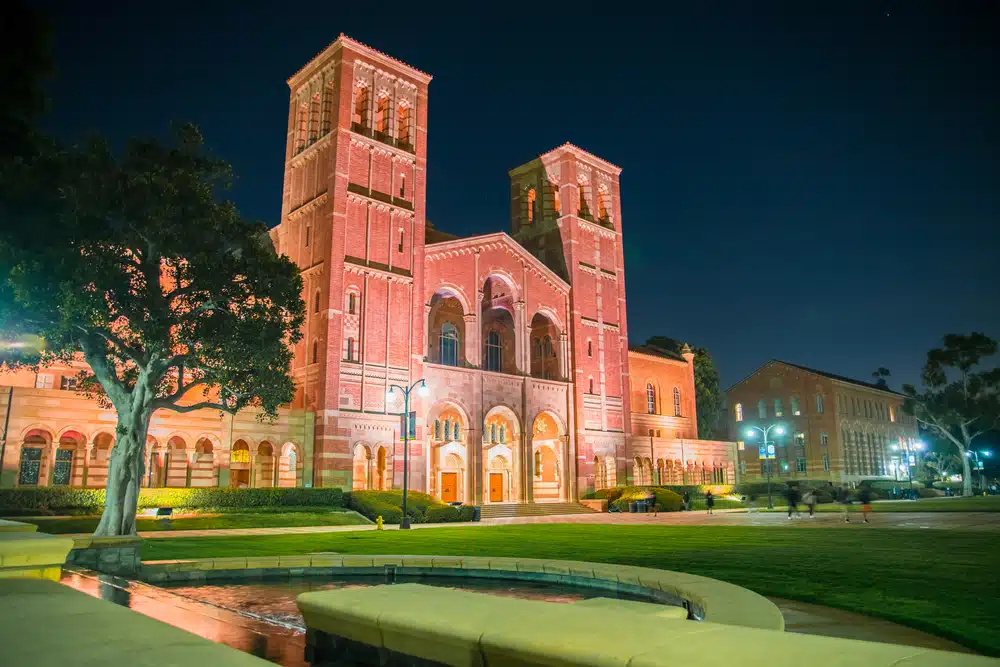Understanding How the UCLA Waitlist Works
Making sense of the college application process can be a challenge, and one unique component that often perplexes prospective students is the waitlist. At universities like the University of California, Los Angeles (UCLA), the waitlist may play a significant role in the admissions process. This article will provide a comprehensive understanding of the UCLA waitlist and how it functions.
The Basics of UCLA Waitlist
Definition of Waitlist
A waitlist, in the context of college admissions, is a holding area for applicants who meet the admission requirements but have not been offered a direct acceptance due to limited space. When an admitted student decides not to enroll, a spot opens up, and the university can offer that spot to a student on the waitlist. It’s important to note that being on the waitlist does not guarantee admission, as the number of open spots varies each year.
Being on the waitlist can be both exciting and nerve-wracking for applicants. It offers a glimmer of hope that they may still have a chance to attend their dream university, but at the same time, it means they have to wait in uncertainty until the final decisions are made. The waitlist process is a delicate balance for both the university and the waitlisted students, as they navigate through the complexities of enrollment numbers and student preferences.
When a student is placed on the waitlist, they are essentially in limbo. They are not rejected, but they are also not accepted. It’s a waiting game, where their fate hangs in the balance, dependent on the decisions of other students and the university’s enrollment needs. This waiting period can be filled with anticipation, anxiety, and a rollercoaster of emotions as students hope for a positive outcome.
Purpose of the Waitlist
Waitlists serve several purposes. Primarily, they provide a buffer for universities to ensure they can fill all available slots in their incoming classes. This is essential because universities, including UCLA, can only estimate the number of admitted students who eventually enroll. Additionally, waitlists allow universities to admit additional qualified students if more slots become available than projected.
For universities like UCLA, the waitlist is a valuable tool in managing their incoming class size. It allows them to balance the number of admitted students and the available resources, such as faculty, housing, and facilities. By carefully managing the waitlist, the university can ensure that they have a diverse and talented student body while also meeting their logistical and financial constraints.
Moreover, the waitlist allows universities to reconsider applicants who may have been initially overlooked or underestimated. It allows the admissions committee to reassess the applicant pool and identify individuals who may be an excellent fit for the university but were not initially offered a direct acceptance due to factors such as limited space or competition.
From the perspective of waitlisted students, being on the waitlist can be seen as a second chance. It offers them the possibility of being admitted to their dream university, even if they were not among the initial round of acceptances. It’s a glimmer of hope that keeps their aspirations alive and motivates them to continue pursuing their academic goals.
However, it’s vital for waitlisted students to understand that the waitlist is not a guarantee of admission. The number of open spots on the waitlist can vary from year to year, and the university’s decision to admit waitlisted students depends on many factors, including enrollment projections, the number of students who decline their offers, and the overall strength of the applicant pool.
Ultimately, the waitlist is a complex and dynamic process that plays a crucial role in college admissions. It offers both universities and applicants a chance to navigate through the uncertainties of enrollment numbers and student preferences. While the waitlist can be a challenging and emotionally charged experience, it also presents an opportunity for students to showcase their resilience, determination, and passion for their chosen field of study.
The UCLA Waitlist Process
The UCLA waitlist process is an essential aspect of the university’s admissions procedure. It provides an opportunity for students who have met the academic and extracurricular criteria but were not initially admitted to have a chance of gaining admission to the prestigious institution.
How Students Get on the Waitlist
Being placed on the UCLA waitlist is not an automatic process. Students must first apply for admission and fulfill all the necessary requirements. Once applications are reviewed, the university admissions committee carefully selects some students to be directly admitted. However, for other qualified applicants for whom there isn’t immediate space, UCLA offers them a spot on the waitlist.
Being offered a place on the waitlist is a testament to a student’s potential and qualifications. It is an acknowledgment that they possess the necessary qualities to thrive at UCLA, but due to limited availability, they cannot be admitted immediately.
After receiving the waitlist offer, students can decide whether to accept or decline it. This decision is entirely up to the student, considering their personal circumstances, other college acceptances, and their desire to attend UCLA.
Timeline of the Waitlist Process
The timeline for the UCLA waitlist process can be somewhat unpredictable, adding an element of anticipation and uncertainty for students. Initially, students learn about their waitlist status when they receive their decisions, generally around late March or early April.
Once students are informed of their waitlist status, they eagerly await further updates from UCLA. The university keeps students informed about any changes in their admission status, including updates on the availability of spaces and the possibility of being admitted from the waitlist.
The waitlist process depends on how many admitted students accept or decline their admission offers. If spaces become available, UCLA admits students from the waitlist, typically starting in late May and continuing through the summer.
This period can be exciting and nerve-wracking for students on the waitlist. They eagerly hope for an opportunity to join the UCLA community, while also considering alternative options and making important decisions about their future education.
Throughout the waitlist process, UCLA maintains open communication with students, providing them with updates and guidance. This ensures that students are well-informed and can make informed decisions about their college plans.
Ultimately, the waitlist process at UCLA is a testament to the university’s commitment to selecting the best and brightest students. It offers a chance for deserving students to showcase their potential and join the vibrant and diverse community at UCLA.
Factors Influencing the UCLA Waitlist
Admission Statistics and Trends
The number of students placed on the waitlist and the number subsequently admitted from it can vary widely each year. These changes depend on several factors, including the overall number of applicants, the quality of the applicant pool, and how many admitted students choose to enroll. Therefore, predicting waitlist outcomes based solely on statistics and trends from previous years is challenging.
One significant factor that affects the number of students placed on the waitlist is the overall number of applicants. UCLA is a highly sought-after institution, attracting a large pool of talented and qualified students. As the number of applicants increases, the competition for admission becomes more intense, resulting in a higher likelihood of students being placed on the waitlist.
Furthermore, the quality of the applicant pool plays a crucial role in determining the number of students on the waitlist. UCLA seeks to admit students who excel academically and demonstrate a solid commitment to extracurricular activities, leadership, and community involvement. The selection process is highly competitive, and only a few applicants can be admitted. As a result, many qualified students may find themselves on the waitlist, waiting for a spot to become available.
In addition to the number of applicants and the quality of the applicant pool, the decision of admitted students to enroll at UCLA also impacts the waitlist. Each year, admitted students have the option to accept or decline their offers of admission. If many admitted students choose to enroll, it reduces the number of spots available for waitlisted students. On the other hand, if the number of students who decide to enroll is lower than expected, UCLA may admit more students from the waitlist to fill the remaining spots.
Impact of Student Yield
Yield rate, or the percentage of admitted students who choose to enroll, significantly affects the waitlist procedure. If the yield rate is lower than expected, UCLA may admit more students from the waitlist to reach their desired class size. Conversely, if the yield rate is higher than anticipated, fewer waitlisted students may be admitted. Therefore, the unpredictability of yield rates makes the waitlist process somewhat uncertain.
Several factors contribute to the yield rate at UCLA. One factor is the university’s reputation and academic standing. UCLA is consistently ranked among the top public universities in the United States, attracting high-achieving students worldwide. The university’s renowned faculty, rigorous academic programs, and vibrant campus life make it an attractive choice for many students.
Another factor influencing the yield rate is the financial aid packages offered to admitted students. UCLA is committed to providing access to education for students from diverse socioeconomic backgrounds. The university offers a range of financial aid options, including scholarships, grants, and work-study programs, to help make education affordable for all admitted students. The availability and generosity of financial aid can greatly impact a student’s decision to enroll at UCLA.
Furthermore, the university’s location plays a role in the yield rate. UCLA’s campus is in the vibrant city of Los Angeles, offering students a unique cultural experience and numerous opportunities for internships, networking, and career development. The allure of living in a dynamic and diverse city like Los Angeles can be a deciding factor for many students when choosing whether to enroll at UCLA.
In conclusion, the factors influencing the UCLA waitlist are multifaceted and interconnected. The number of applicants, the quality of the applicant pool, and the decision of admitted students to enroll all contribute to the waitlist outcomes. Additionally, the yield rate, influenced by the university’s reputation, financial aid packages, and location, further impacts the waitlist process. Understanding these factors can provide insight into the complexity of the waitlist procedure at UCLA.
Navigating the UCLA Waitlist
Steps to Take After Being Waitlisted
After receiving a waitlist offer, there are a few steps that students can take to maximize their chances of admission. These include accepting the waitlist offer promptly, staying committed to academic excellence, and, in some cases, sending a letter of continued interest to the admissions office. It may also be wise to secure another college option if the waitlist does not result in admission.
Accepting the waitlist offer promptly is crucial as it shows the admissions office that you are genuinely interested in attending UCLA. By promptly accepting the offer, you demonstrate your eagerness to be considered for admission and willingness to wait for a potential spot to open up. This step also allows the admissions office to gauge the level of interest from waitlisted students and make informed decisions about how many additional students to admit.
Staying committed to academic excellence is another important aspect of navigating the waitlist. Admissions officers will continue to review your academic performance during the remainder of your senior year, so it is essential to maintain your high standards and strive for excellence. This can be achieved by staying focused, seeking help, and dedicating time to studying and completing assignments. By consistently demonstrating your academic abilities, you increase your chances of being admitted off the waitlist.
Sometimes, sending a letter of continued interest to the admissions office can be strategic. This letter allows you to update the admissions committee on any new achievements, grades, or awards that you have received since submitting your application. It also allows you to express your continued interest in attending UCLA and explain why you believe you would be a valuable addition to the university community. However, it is important to approach this step with caution. Sending multiple letters or bombarding the admissions office with excessive communication can be a nuisance and may harm your admission chances.
While waiting for a decision from the waitlist, it is advisable to secure another college option. This ensures you have a backup plan in case the waitlist does not result in admission. Research other colleges or universities that align with your academic and personal goals, and consider submitting an enrollment deposit to secure your spot. By having an alternative option, you can alleviate some of the stress and uncertainty that comes with being on a waitlist.
Communicating with the Admissions Office
It is acceptable and often beneficial for waitlisted students to communicate with the UCLA Admissions Office. This could involve updating them on new achievements, grades, or awards, or expressing continued interest in the university. However, it’s essential to do this tactfully and respectfully, without excessive communication, as this could be seen as a nuisance rather than a demonstration of interest.
When communicating with the admissions office, it is essential to be strategic and thoughtful in your approach. Instead of bombarding them with constant updates or inquiries, choose your moments wisely. Consider sending an occasional email to update them on any significant developments in your academic or extracurricular life. This could include receiving a prestigious scholarship, winning a competition, or achieving exceptional grades in challenging courses.
When crafting your communication, express your continued interest in attending UCLA. Share your genuine enthusiasm for the university and explain why you believe it fits your academic and personal aspirations perfectly. It is essential to balance demonstrating your interest and not coming across as desperate or entitled.
Remember that the admissions office is busy reviewing applications and making decisions, so be patient and understanding. Avoid sending multiple emails or making excessive phone calls, as this can be seen as intrusive. Instead, focus on making a solid impression through thoughtful and well-timed communication.
Additionally, seeking guidance from your high school counselor or college advisor when navigating the waitlist process can be helpful. They can provide valuable insights and advice based on their experience and knowledge of college admissions. They may also be able to offer suggestions on how to effectively communicate with the admissions office and increase your chances of being admitted off the waitlist.
Overall, navigating the UCLA waitlist requires a combination of prompt acceptance, continued academic excellence, strategic communication with the admissions office, and securing another college option. By following these steps and staying proactive, you can increase your chances of being admitted to UCLA and potentially fulfilling your dream of attending this prestigious university.
Moving Off the UCLA Waitlist
Possible Outcomes for Waitlisted Students
There are several potential outcomes for students on the UCLA waitlist. The best-case scenario is being offered admission. However, if you’re not offered an admission spot, you may remain on the waitlist until all spots are filled, or you can choose to remove yourself from the waitlist at any time. Regardless, having backup plans and staying open to other opportunities is crucial.
Preparing for Different Scenarios
While waiting on the UCLA waitlist, preparing for different scenarios is essential. This may include being ready to attend UCLA if admitted, but also making concrete plans with other university offers you may have received. Remember, the purpose of the waitlist is not to give false hope, but to offer another chance at admission should the opportunity arise. So, stay optimistic, but also be realistic and prepared for all possibilities.
If you want to discuss the matter to a greater extent or inquire about college admissions, look no further! Our experts here at AdmissionSight can help you! Here at AdmissionSight, we have over a decade’s worth of experience guiding students through the competitive admissions process to get accepted to the top universities in the world. Feel free to set up an appointment today to book your initial consultation.










































